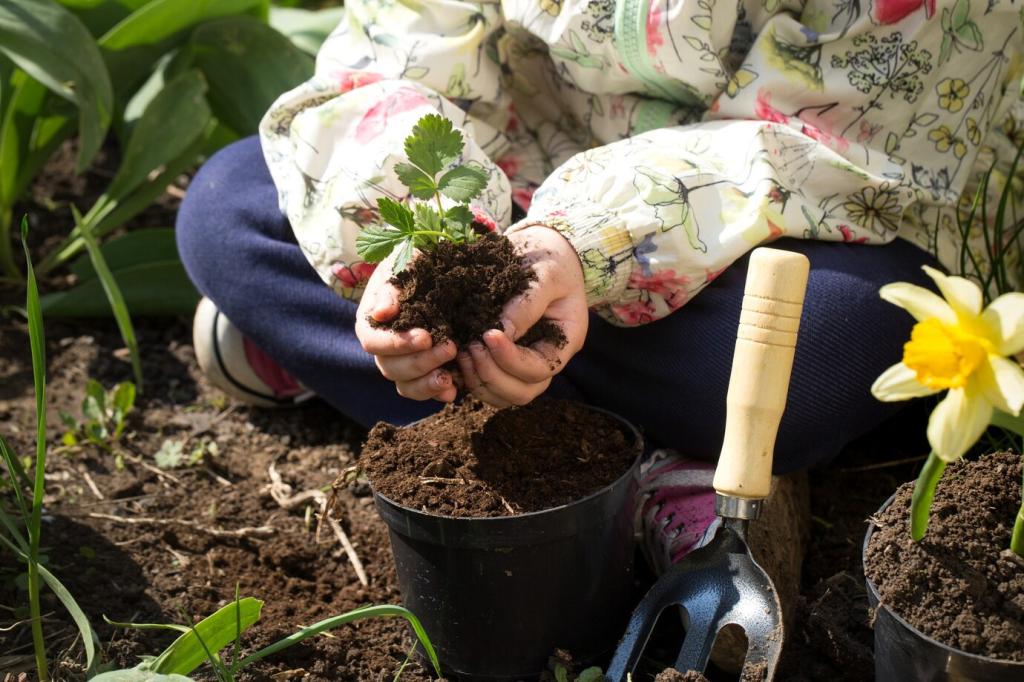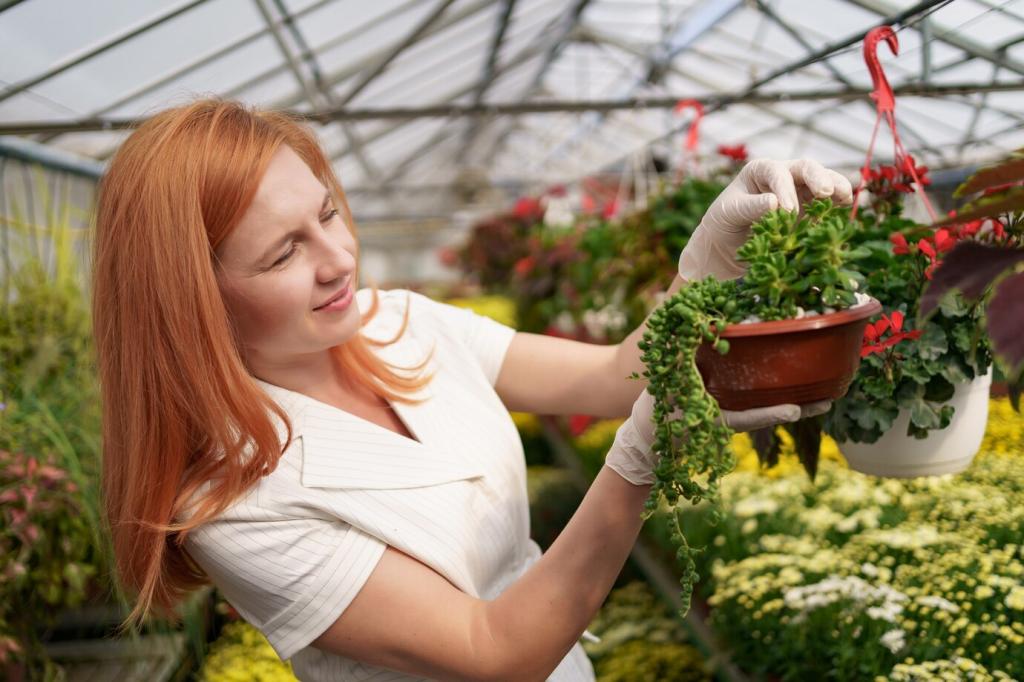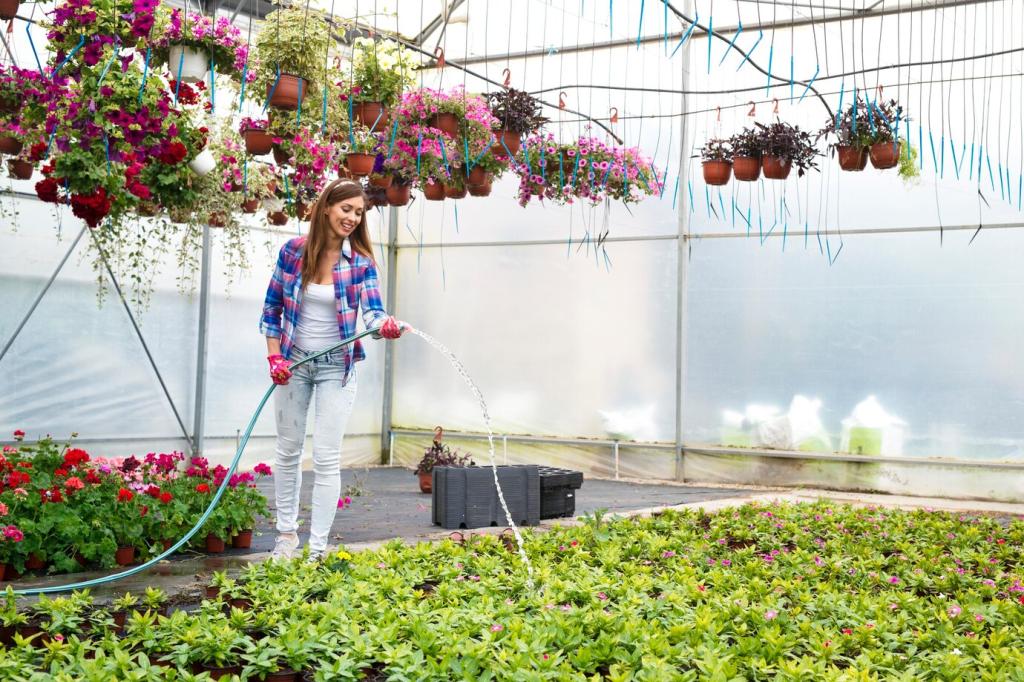
Vertical Gardening: Maximizing Space in Urban Environments
Vertical gardening is transforming the way city dwellers interact with nature. In densely populated urban areas where horizontal space is scarce, these innovative gardens offer a fresh solution for growing plants upwards, utilizing walls, fences, and even balconies. Whether you’re a seasoned gardener or a complete novice, vertical gardening opens up new opportunities for greenery, improved air quality, and personal food production right in the heart of the city. This approach not only beautifies concrete landscapes but also provides sustainable ways to reconnect with nature, boost well-being, and maximize every square inch of living space.
The Rise of Urban Vertical Gardens
01
Historical Inspiration
Throughout history, humans have found ways to integrate plants into built environments, from the ancient Hanging Gardens of Babylon to green walls on modern skyscrapers. These precedents highlight a long-standing desire to blend architecture with nature, serving as inspiration for today’s city gardeners looking for innovative ways to maximize limited outdoor areas. By taking cues from the past, urban dwellers can appreciate how vertical gardening connects contemporary living with age-old traditions of plant cultivation in challenging spaces.
02
Contemporary Significance
With rapid urbanization, city spaces are more compact and less green than ever before. Vertical gardens provide a highly relevant solution to these challenges by redefining how we use walls, rooftops, and small courtyards. Their popularity is fueled by a widespread desire for sustainable living and the growing recognition that plants can help mitigate urban issues like pollution and stress. The rise of vertical gardening reflects a broader movement toward creating healthier, more livable urban environments.
03
Community Impact
Urban vertical gardening isn’t just about individual aesthetics or food production—it’s also reshaping local communities. Shared green walls, public installations, and communal gardens foster a sense of collaboration and environmental stewardship among neighbors. These projects empower residents to take charge of their urban landscapes, improving social ties and encouraging green practices on a larger scale, ultimately transforming neighborhoods, enhancing biodiversity, and fostering civic pride.
Planning Your Vertical Garden
Understanding the physical characteristics of your available space is the foundation of a successful vertical garden. Check factors like the amount of sunlight, wind exposure, and wall material to identify the best location for your installation. Consider whether you’ll be mounting structures to sturdy surfaces or using freestanding frames for flexibility. Taking accurate measurements and observing natural elements throughout the day helps prevent design mistakes, ensuring your vertical garden thrives in its chosen setting.
Previous
Next

Space Optimization
Urban living is often defined by limited square footage, making efficient use of every inch imperative. Vertical gardening enables plant lovers to grow upward instead of outward, taking advantage of blank walls, balconies, or even fences. This method is particularly useful for apartment dwellers and renters who want to cultivate plants but lack access to traditional garden beds. By maximizing vertical surfaces, even the tiniest home can become an oasis of foliage and flavor.

Improved Air Quality
Urban areas frequently grapple with air pollution, dust, and heat, all of which negatively impact residents’ health and comfort. Vertical gardens act as natural air filters, absorbing pollutants and releasing oxygen, while dense foliage acts as a buffer against noise and particulate matter. Certain plant species are especially effective at removing toxins, making living walls not just beautiful, but beneficial for cleaner indoor and outdoor air. Residents thus enjoy not only a more attractive environment but also one conducive to better health.

Enhanced Well-Being
Interacting with plants has been linked to reduced stress, increased productivity, and improved mood—all crucial benefits amid the hustle and bustle of city life. Vertical gardens offer easy access to restorative green space, even indoors or in high-rise settings. Watching plants grow, tending to them, and simply seeing greenery daily contribute to emotional well-being, mindfulness, and a deeper sense of satisfaction with urban living.
Design Considerations for Maximum Impact
Aesthetics and Layout
The visual appeal of a vertical garden depends on thoughtful plant selection and arrangement. Consider variety in color, texture, and foliage shape to create depth and interest across the vertical plane. Cascading vines, structured succulents, and flowering species can be mixed for maximum impact. The choice of planters, frames, and irrigation lines should complement both the plants and the surrounding architecture, transforming flat walls into lush living tapestries.
Sunlight and Water Management
Vertical gardens must be designed with careful attention to sunlight availability and water distribution. Grouping plants by their light requirements ensures each species gets what it needs for optimal growth. Effective irrigation is critical—gravity can move water unevenly, so drip or hydroponic systems are often used to keep moisture levels consistent across tiers. Regular checks prevent dry patches or overwatering, protecting your garden’s vitality and longevity.
Maintenance Accessibility
When designing your vertical garden, consider the ease of routine maintenance. Structure your layout so that each plant can be reached for pruning, feeding, or replacing without strain. Modular designs, removable planters, or strategically placed ladders can make upkeep practical and safe. Making maintenance simple encourages regular care, ensuring your living wall remains vibrant and healthy throughout the year.
Upcycled Materials
Resourceful urban gardeners often repurpose materials like wooden pallets, discarded bottles, or even shoe organizers to build customized vertical structures. These upcycled creations reduce waste and keep costs low while giving your installation a distinctive look. Careful selection of materials ensures they’re safe and durable for plant growth. By upcycling, you contribute to sustainability further, making your garden not just a space-saving asset but also a testament to environmental stewardship.
Ready-Made Systems
For those seeking convenience and reliability, many manufacturers offer pre-designed vertical garden kits. These systems come with modular panels, built-in irrigation, and clear assembly instructions, making setup straightforward for beginners or those short on time. While sometimes more expensive than DIY solutions, ready-made kits can save hassle and minimize trial and error, allowing for professional-looking results and rapid installation in almost any urban context.
High-Tech Innovations
Technology is increasingly influencing vertical gardening, with options like hydroponic towers, automated irrigation, and even smart sensors for monitoring plant health. Such innovations make it easier to maintain optimal conditions and expand the variety of plants that can be grown vertically, including edible species. High-tech systems are ideal for urbanites looking to maximize yield, minimize manual labor, or simply embrace the future of urban agriculture.
Vertical Gardening for Edible Plants
Herbs and Leafy Greens
Vertical gardens are especially well-suited for fast-growing, shallow-rooted crops like basil, parsley, lettuce, spinach, and arugula. These flavorful plants thrive in containers and are harvested continually, providing ongoing fresh additions to meals. Growing herbs and greens vertically keeps them accessible, controls pests better, and makes the most of limited space. Regular harvesting stimulates regrowth, ensuring a steady supply of kitchen-ready ingredients for urban food enthusiasts.
Strawberries and Compact Fruits
Certain compact fruiting plants, most notably strawberries, adapt well to vertical gardens. Their small stature, shallow roots, and cascading growth habit make them ideal for pocket planters or wall-mounted pots. Some dwarf tomato or pepper varieties and even mini cucumbers can thrive in well-managed vertical systems. These edible additions offer not just healthy snacks at arm’s reach but also eye-catching color and vitality to your garden installation.
Small-Scale Urban Farming
By stacking planters and using modern hydroponic or aeroponic systems, some urban gardeners are transforming spare corners into miniature farms. These setups can significantly increase annual yields of salad crops, culinary herbs, or even gourmet mushrooms within an incredibly small footprint. Enthusiasts embrace vertical farming for its ability to provide hyper-local food, reduce grocery bills, and create teaching opportunities for children and adults alike, fostering independence and food awareness in the city.
Maintenance and Seasonal Care
Vertical gardens often dry out faster than traditional beds, as gravity can pull water away from upper plants. Consistent irrigation—often via drip lines or built-in reservoirs—ensures that every level receives enough moisture. Using a water-soluble or slow-release fertilizer helps nutrient delivery across all tiers. Periodic checks for dry spots or leaks help avoid plant stress and maintain lush growth, while a feeding schedule ensures robust plants and continual productivity.

